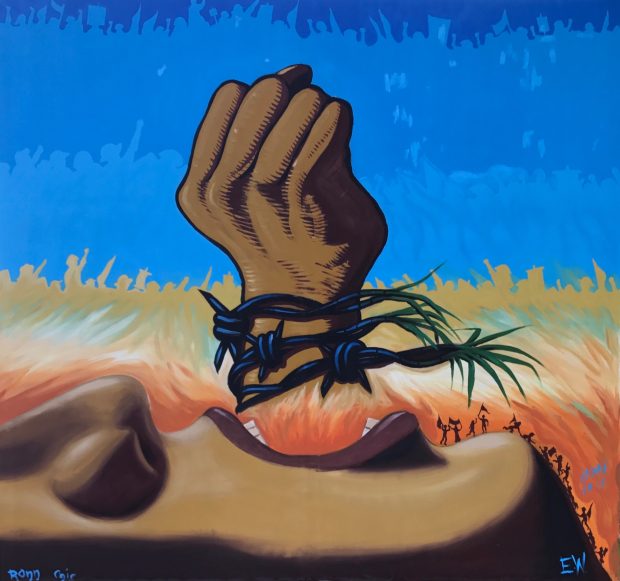Artists honor medical workers with street mural
A group of street artists painted a mural on a wall at a street corner in Manila honoring medical workers battling the corona virus pandemic in hospitals and other health facilities throughout the country.
More than a year and a half since the pandemic hit the Philippines, friends Sim Tolentino, Christian “Lamok” Cresencio and Bryan Barrios collaborated on a mural at the corner of Singalong and Remedios streets at the capital city’s Malate District.

The mural features three faces wearing face masks, two of whom sport raised clenched fists, referencing the series of protest actions held last week by medical workers, calling for the payment of benefits as well as the resignation of Department of Health Secretary Francisco Duque III.
Tolentino said their group wanted to call attention to the health workers’ demands and for the Philippine government to effectively respond to the worsening pandemic.

The Philippines breached the two million COVID-19 cases last week amid warnings by various experts the pandemic appears to be worsening in the country.
“The government must adequately respond and give the proper support to the front liners and health workers. But we know that its response is not only inadequate, it even asks for a smaller health budget for next year,” Tolentino told Kodao in an online interview.
He added that a large part of the proposed 2022 budget would only be given to intelligence funds that are exempt from audit.

In an earlier Facebook post, Cresencio said the Malate mural is their group’s first project since they were forced to abandon their Intramuros mural project at the onset of the pandemic lockdowns.
“Exactly a year after we failed to finish our mural in Intramuros, we are back in Manila and nothing has changed,” Cresencio wrote.
The Malate mural took just a day to complete last Sunday, August 5.
Tolentino explained their street art is their way of contributing to the achievement of the people’s aspirations.
“Art in any form must be relevant, not just to reflect society but a weapon of change for the betterment of the masses,” he said. # (Raymund B. Villanueva)


